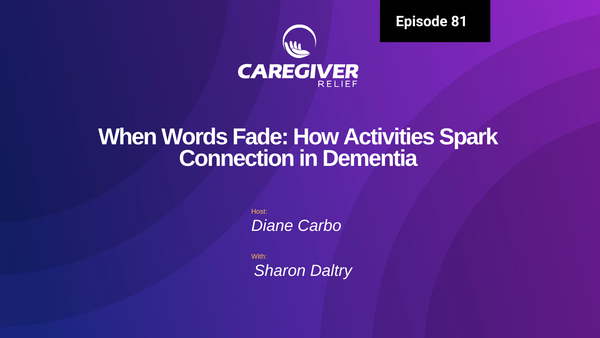What is a Long Term Care Facility?

Long-term care facilities are a type of senior living arrangement that provides around-the-clock medical care for individuals with chronic health conditions or disabilities. These facilities offer personalized services such as medical care and physical therapy, as well as assistance with everyday activities such as bathing, dressing, and eating.
There are several different types of long-term care facilities available, each with its own set of services and guidelines. Nursing homes provide comprehensive care for those who need more extensive medical attention. Skilled nursing facilities are similar to nursing homes, but they focus more on rehabilitative and restorative care. Hospice care is typically for people with terminal illnesses who require end-of-life care. Assisted living centers provide assistance for those who are not able to live independently, while home health care offers more limited in-home care. Adult day care centers are designed to provide elderly adults with social stimulation and activities throughout the day. Finally, memory care facilities provide specialized care for patients with Alzheimer's disease or other forms of dementia.
No matter what type of care you are looking for, there is likely a long-term care facility that can meet your needs. It is important to research all of your options and make sure that the facility you choose is the best fit for you or your loved one.
Types of Long-Term Care Facilities
Long-term care facilities provide care and support for people who need assistance with daily activities due to physical, mental, or emotional ailments. They offer different levels of care depending on the individual's needs and can range from nursing homes to memory care facilities. Here is a breakdown of the various types of long-term care facilities.
Nursing Homes
Nursing homes are a type of long-term care facility designed for elderly individuals who need 24-hour medical care and assistance with basic daily activities. Nursing homes typically provide access to nurses, doctors, and other medical professionals, as well as physical and occupational therapy. They also often have on-site recreational activities and social activities.
Skilled Nursing Facilities
Skilled nursing facilities are similar to nursing homes but offer more specialized care. These facilities typically provide short-term rehabilitation and skilled nursing services, such as physical and occupational therapy. Patients typically stay in these facilities up to three months until they are able to move back into their home or into an assisted living facility.
Hospice Care
Hospice care is a type of long-term care designed for terminally ill patients who need special attention and comfort over an extended period of time. Hospice care includes physical care, emotional support, and spiritual guidance. It is usually provided in the patient's home or in a hospice facility.
Assisted Living
Assisted living facilities offer a combination of housing, personal care, and health care services for seniors who need some help with day-to-day activities such as bathing, dressing, and cooking. They also typically provide access to transportation, recreational activities, and on-site support staff. Assisted living facilities are usually the most cost-effective option for seniors who don't need round-the-clock medical care.
Home Health Care
Home health care is a type of long-term care that provides medical and personal care services in the comfort of the patient’s home. Home health care typically includes assistance with activities such as light housekeeping, bathing, dressing, and grocery shopping. It also includes medical care, such as wound care and administering medications.
Adult Day Care
Adult day care centers provide a safe and stimulating environment for elderly individuals during the day. This type of long-term care allows seniors to remain in their homes while receiving social activities, meals, and medical care. Adult day care centers typically provide transportation and door-to-door service for those who are unable to drive.
Memory Care
Memory care facilities are designed specifically for individuals living with dementia or Alzheimer's disease. These facilities typically provide secure, residential care in a home-like setting and offer supervised activities, specialized meals, and around-the-clock security and monitoring. Memory care facilities also typically provide access to memory specialists, therapists, and other medical professionals.
Eligibility Requirements for Long-Term Care
When considering a long-term care facility, it is important to understand the eligibility requirements for admission. Specific criteria can vary from facility to facility, but there are some common requirements to be aware of.
Insurance Coverage
Most long-term care facilities require patients to have adequate insurance coverage to offset the cost of their care. This includes Medicaid, Medicare, private insurance, and veteran’s benefits. Some facilities may also accept payments from trusts or annuities. It is important to check with each facility for their specific policy regarding accepted forms of payment.
Pre-Existing Conditions
In addition to insurance requirements, most long-term care facilities also require that applicants have certain pre-existing conditions. These conditions can include mobility issues, cognitive impairment, the need for supervised care, and medical conditions that require round-the-clock assistance.
Applicants must also provide proof of physical exam results and any necessary vaccinations. In many cases, facilities may also require a psychological evaluation or background check.
It is important to note that each facility will have its own unique set of eligibility requirements that must be satisfied in order to be accepted. Therefore, it is important to research potential facilities thoroughly prior to making a decision.
Cost Factors
When considering a long-term care facility, there are many cost factors to consider. Depending on the type of care needed, fees, insurance coverage, and out-of-pocket expenses can vary greatly from one facility to the next.
Fees
The most common type of fee is an admission fee, which is sometimes referred to as an entrance fee or initial deposit. This fee can range from a few thousand dollars up to several tens of thousands of dollars. In some cases, this fee may be refundable if the resident leaves the facility.
In addition to these one-time fees, residents may also need to pay monthly fees for the cost of room and board, as well as any additional services they require.
Insurance Coverage
Long-term care facilities may accept various insurance plans, such as long-term care policies, Medicare, Medicaid, HMOs, and private pay plans. It’s important to check with each individual facility to determine what plans they accept.
Out-of-Pocket Expenses
While the cost of long-term care varies among different facilities, there are certain services that may not be covered by insurance or other payment plans. These services may include special medical equipment, prescription medications, in-home care provided by an outside source, or any other additional amenities. It is important to be aware of all of these costs when researching and comparing different facilities.
Overall, it is important to research the various cost factors associated with long-term care facilities before making a decision. Taking the time to do this can help ensure that you find the best fit for your needs while staying within your budget.
Quality of Care
When considering a long-term care facility, it is important to consider the quality of care provided. Residents should feel safe and secure in their living environment with access to appropriate health care services and trained healthcare professionals.
Safety
Safety is a priority for long-term care facilities. The facility should have appropriate security measures in place such as electronic locks, emergency response systems, and a 24/7 presence of staff to ensure the safety of all residents. They should also provide staff training on emergency procedures.
Staffing
Long-term care facilities should be well-staffed in order to provide the highest quality of care. These facilities should employ enough staff to meet the needs of the residents. This includes nurses, medical assistants, nutritionists, social workers, and other healthcare professionals.
Choosing a Facility
Finding the right long-term care facility is an important decision. In order to make the best choice, it's important to do your research, speak with family and friends, and visit potential facilities. Here are some steps you can follow when selecting a facility.
Research
Start by doing research online to get an initial understanding of the type of care you need and what types of facilities offer those services. Look for information about the facility's history, its accreditation status, and the quality of care it provides. Take the time to compare different facilities and their costs in order to find one that best fits your budget.
Discuss With Family and Friends
Talking with family and friends who have previous experience with long-term care facilities can be an invaluable source of information. They can give you firsthand accounts of the quality of care provided at different facilities, as well as recommendations on which facilities to consider. It can also help to speak with a healthcare provider who can explain more about the medical needs of the patient and the care they require.
Visit Potential Facilities
Take the time to visit each potential facility before making a final decision. While there, make sure to take a tour of the facility, ask questions, and observe how staff interacts with the residents. Consider factors like physical surroundings, safety protocols, recreational activities, food quality, and more. Ask about the policies and procedures regarding emergencies, payments, and guest visits.
Choosing a long-term care facility is an important decision, but by following these steps, you can find the best fit for you or your loved one.
Choosing the Right Long-Term Care Facility
When it comes to choosing a long-term care facility for yourself or a loved one, it is important to take the time to do your research. Every facility offers different levels of care and has different policies and procedures. When looking for a facility, consider your needs and the needs of those in your care. Ask questions and get answers. Visit facilities and speak with staff members to make sure you feel comfortable.
Most importantly, avoid making rushed decisions. Take the time to correctly evaluate each option and make sure it is the right fit. Consider the costs, quality of care, and eligibility requirements when making your decision. Researching long-term care facilities can seem daunting, but taking the time to get all the facts will ensure the best possible outcome for you and your family.





